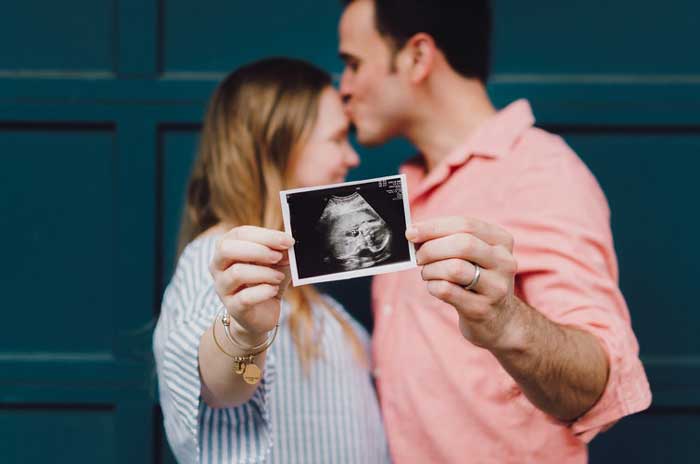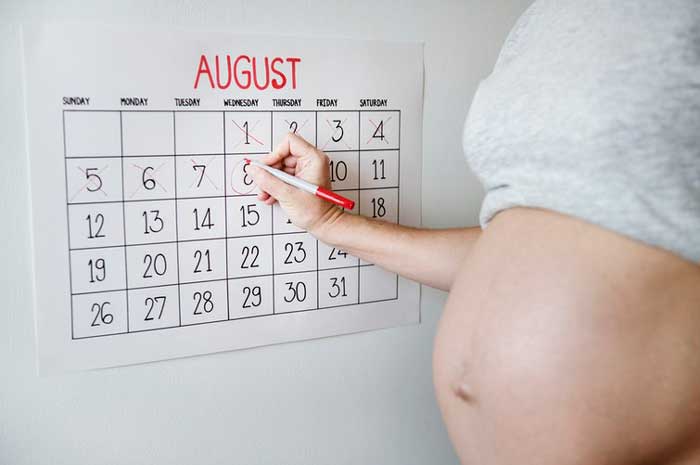16 Issues Doctors Can Muddle When Dealing with the Coming Baby
When a woman is pregnant, both parents pass through a very strenuous time as the mother’s symptoms manifest themselves. Which of them are natural and which require medical attendance? Of course, future mothers are often over at the doctor’s, and they take one or more ultrasounds. All these precautions are intended to keep hearts at peace, yet there are so many physical changes that some of them can be misconstrued and then lead to potential complications. Also, many doctors are given to predicting things to the pregnant woman without thinking that she is apt to regard it as a fact, sometimes getting astonished later after a successful delivery.
Predictions are uncertain things because nobody can say exactly what processes are going on during pregnancy, so any ideas about it cannot be but speculative. Though pregnancy is mostly a healthy phenomenon, there may occur issues and problems that leave both doctors and mothers baffled. There are cases when moms intuit about something in their womb of which their doctor is ignorant. With all their knowledge and care doctors can go far wrong in their understanding about how the pregnancy is progressing. Where they can be mistaken more often, you will learn to peruse the paragraphs below.
Questioning gender
There are parents who are ready to welcome a child of any gender, but there are many who can’t wait until the technician informs them about the sex of the fetus. Ultrasounds of different kinds can determine the gender, yet there are factors that could influence the accuracy. For one, the position of the umbilical cord may confuse the issue showing parts that seem to be there but aren’t; and you have to have an old hand for a technician. If you get an ultrasound at 20 weeks and after, they should be accurate in 95% of cases, meaning that 5% of parents are in for a surprise.
Questioning number
Ultrasounds done too early (in the first and second trimester) could be very much wide of the mark as to the fetus’s gender or even failing to register other babies. A mother may not be aware she is carrying twins or triplets until she reaches the second half of her second trimester. While in the past multiple babies came a surprise, nowadays they are easily detected by sophisticated equipment in the US clinics. A second baby can sometimes astonish everybody concerned these days too if the mother omitted to undertake a scan or the scan has been read wrongly.
Questioning weight
With a baby weighing more than the average, medicos begin to wonder whether the mother would be able to deliver naturally avoiding unwelcome issues. Shoulder dystocia in the baby is often particularly feared because it could end up as a permanent deformity. Giving birth to a large baby can involve unexpected difficulties and be rather more painful than usual, so unsurprisingly mothers and doctors are concerned about that. Because of it mothers may sign up for extra medical procedures that are not so necessary when all is said and done. Generally babies don’t exceed the weight of 11 pounds, nonetheless, mothers get nervous that a C-section could be deemed meeting the case.
Questioning syndromes
One of the astounding issues is that with a baby with the Down syndrome is very difficult to diagnose – it often happens only after the birth, sometimes quite a long time after the birth. The Down syndrome can manifest itself even with babies by low-risk mothers who are not yet 35. They may undertake a number of scans, but unless they test for Down in particular (which they don’t usually do), they won’t know it. With high-risk moms detection is even more difficult: results can often be misleading, and parents may have to face crucial decisions when the baby is already here. Although mothers older than 35 are believed to be at higher risk, more babies with the Down syndrome are born to younger ones.
Questioning due day
Unless your doctor tells you explicitly that your due date they have figured out is only an approximate one, you may become sure that it is a certain milestone. Meanwhile, it is very much not so: mothers have but 35% certainty that labors will occur on the week around the due date. Generally, the date is calculated according to the woman’s last menstrual cycle, so it can’t be very exact with many aspects at work. Even the woman’s height can influence the date. Nobody can tell just when the fertilized egg came up to the uterine wall which sets the pregnancy clock ticking.
Things turn out to be right at the end
A scan can sometimes reveal unusual and worrying sights. It spells a hard time for the doctor who has to decide whether it means a terminal diagnosis or something grave that can leave the future child badly mutilated. If they find things in a really bad state, it’s up to parents to decide if it is worth waiting for the natural end of the pregnancy. Now some mothers don’t hesitate to go on and face the consequences. And when the baby comes out they may discover that it was all a mistake and the baby enjoys perfect health. The fact is, the fetus may assume such a quaint position that the ultrasound lends itself to a misinterpretation though the doctor can be an experienced one.
Questioning organs
It’s common for expecting mothers to have an anatomy scan to take a peek at their baby after 20 weeks have passed. Its purpose is to check on vital internal organs – heart, brain, lungs, kidneys and so on. Time and time again it happens that a bay has an organ missing or positioned wrongly: not in its proper place or outside the fetus. It’s fairly rare, but should something as this happen, the mother has to make up her mind if she will stop the pregnancy. The decision is unfortunately complicated by the fact that, by the BMC statistics, more than 8% of tests can show a false positive, and 9% of results and more may eтв up with a misclassification.
Count the fingers
Another mischance is polydactyly, that is, the formation of more than the usual five fingers on the baby’s hand. It comes in a lot of variations depending on how many extra fingers there are and whether they are real, bony ones. Alternatively, there may occur syndactyly – that’s when hands are webbed or fingers grow linked. These conditions can be seen on the ultrasound – only the fingers and toes are so tiny that no matter how experienced the doctor, he may misinterpret the image and get a surprise later. Their attempts to count little fingers and toes could be fobbed by a hazy image or movements of the baby.
Questioning ambiguity
The responsibility of the doctor is to be attentive for specific signs that indicate different aspects of the fetus’s health and often gender. Possible problems and gender can also be detected by the FISH test. There was a case when a mother, having received a diagnosis to the effect that the baby turned out to be “ambiguous,” filed a suit against the professionals. Later it was recognized as a clerical error. So when parents are informed that the coming baby is ambiguous or that there is an immediate need in corrective surgery, they should get a second opinion on that to avoid making a grave mistake due to misinterpretation.
Questioning labors
Labors can go on for several days, but then again, how long labors will last depends on the woman and even on the coming baby. It can also happen that a mother gets taken to the hospital only to be sent back because it turned out to be not a real labor but a phenomenon of false labor known as Braxton Hicks contractions. Meanwhile, some women believe they have been sent away because the doctors were not paying enough attention to them. Would-be moms who are worrying about having pre-term contractions can go to the hospital and wait in line for a doctor’s examination – and some can wait until their Braxton Hicks cease.
The possibility of C-section
As future mothers discuss this issue, they may come to believe that if doctors advise a C-section it is because it is necessary and beneficial for delivery. Unfortunately, it isn’t always so. Doctors might go completely wrong over the point, sending poor mothers to have C-sections and get cut up without any strong necessity. Yes, sometimes undergoing a C-section is determined more by the hospital’s policy or history than by any real medical benefit. It emerges that more than 50% of C-sections were not as necessary as the doctor insisted they would.
Questioning IUGR
IUGR, or Intrauterine growth restriction, is a condition when the fetus isn’t growing as quickly as it should. As a result, the baby comes out weighing less than usual. IUGR is usually diagnosed according to the measurements from the anatomy ultrasound image and from subsequent ultrasounds; the sad fact is some of the babies with suspected IUGR are delivered with a normal birth weight—the IUGR suspicion was a mistake. Should the diagnosis prove to be incorrect, it might result in unnecessary medical intervention and have grave consequences for both the baby and the mom.
Instinctive knowledge
A would-be mom can often get intuitive insights about her state, but the funny part is neither the woman nor her doctor takes much stock of such intuitive flashes. Doctors, when hearing about what the woman believes to be happening with her body, are apt to act disdainfully or go out of their way to explain it away as fanciful. But the truth is, the gut feeling can turn out to be right and indicate something the doctor dismissed as insignificant. The fact is, doctors are having a hard time of it, for not to pay attention to small signs may mean to miss an important issue, but over-testing is not a good idea either, it may be chasing wild geese. They have to stick with a middle lane and take into account the patient’s instincts.
Questioning breech
In the general line of things, babies assume the right birthing position by the start of labor, turning in the right direction, but there are babies who take their time over it and leave the breech position only when it is time for them to come out – it may be the very last moment. Some doctors explain moms-to-be that if the baby stays in the breech position a week before the due date, a C-section will have to be performed. There is some truth in it, but in many cases it means an unnecessary risk since the baby can turn at the last minute, making vaginal birth possible.





